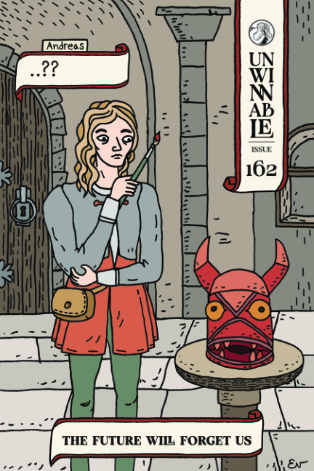
Cisswap

This column is a reprint from Unwinnable Monthly #162. If you like what you see, grab the magazine for less than ten dollars, or subscribe and get all future magazines for half price.
———
Examining trends in fanfiction.
———
In the mid-2000’s there was a push for a form of 4chan netiquette known as the Rules for the Internet. If you were an active online user, it would be hard for you to avoid these “rules,” which like most things generating from one of the Internet’s classical cesspools are generally irreverent, but include things like “don’t fuck with cats,” (an internet aphorism that is now the name of a Netflix series about a man who made the mistake of doing just that) and “if it exists, there is porn for it.” One of those “rules” is Rule 63 – “for every given male character, there is a female version of that character, and vice versa.”
Let’s talk about cisswap.
Known under many tags (including Rule 63, genderbending, gender swap, Always a Different Sex), cisswap is an fandom device most commonly used to make male characters women. While not exclusively the case, if you go through the tags for cisswap, it’s frequently Fem!CharacterName, such as adaptations where the Stray Kids boyband is actually a girlband. Sometimes you have canon explanations for the gender-swap – BTS’s Min Yoongi once infamously dressed as a girl for a variety show, and there are now quite a few Min Yoonji fics on AO3 – but it can just as easily be Sam and Dean Winchester are now female monster hunters on the hunt for the demon that their mom has been hunting for decades.
While cisswap is a relatively new term in the fandom, it has been practiced in quite a few fandoms throughout modern fan culture mostly as genderswap. You can see 2010’s era dream fic of Sam/Frodo from The Lord of the Rings movies or works where James T. Kirk is instead Jane Kirk. Fandoms where you might expect cisswap – say in a cast that is almost exclusively gay and male like KinnPorsche – are sometimes almost entirely absent of the trope. There isn’t a lot of rhyme or reason to the why of it – like most tropes it’s more defined by the fandom than by the actual work itself.
There is an overall dearth of woman-fronted fan content, and cisswap is – in some ways – a response to that. Every year, AO3 user centreoftheselights does a massive project of fandom data collection and analysis known as the AO3 Year in Review. This massive undertaking has been ongoing since 2013 and includes stats on the 100 most popular pairings, breaking them down by fandom, where they’ve previously ranked on the list, how many works (new vs. total), and in more recent incarnations has gotten into data collection related to gender and race as well. They’ve done work on talking about the lack of prevalence in “femslash” – or female/female pairings in fandom here’s a short write up from them about it and it gets to the heart of the issue – even in shows and media where women exist, they are frequently under-represented in fandom. In the 2022 AO3 Year in Review in the top 100 pairings, there are only 6 lesbian couples. By contrast there are more than triple that for non-romantic relationship tags.
Cisswap is not exclusively a response to the void of femslash. You see cisswap in fandoms with thriving female characters and fandoms – see the Wen Kexing/Zhou Zishu femswap fandom in Word of Honor, a show with interesting and powerful female side characters. A lot of Rule 63 content is simply just imaging the characters confronting the issues they face in canon, but as a different sex. It’s another form of playful creation, a common element of fandom.
———
Amanda Hudgins is an occasional writer, former rugby player and wearer of incredibly tall shoes.




